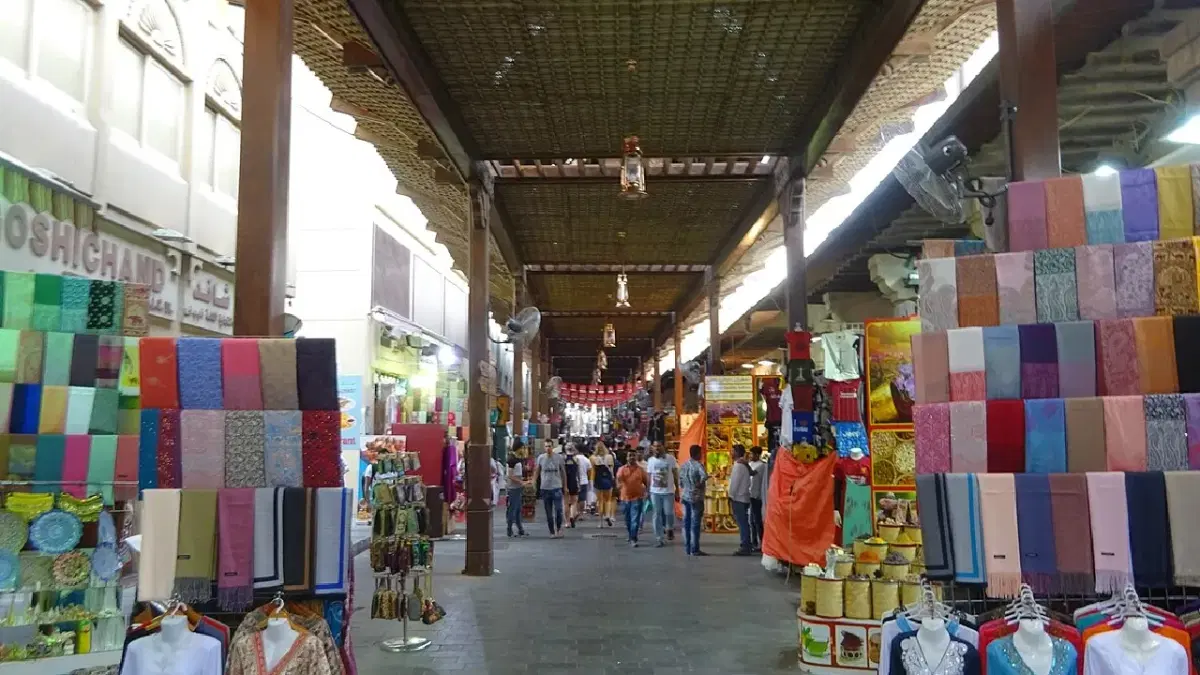
- Home
- Attractions
- Dubai
- Camel Museum Dubai: A Cultural Journey into the Heart of Emirati Heritage
Camel Museum Dubai: A Cultural Journey into the Heart of Emirati Heritage

The Camel Museum Dubai is a gorgeous reminder of the origin of the UAE and its traditions in a city of futuristic skyscrapers and luxurious experiences. This museum is a cultural secret located in the historic Al Shindagha Heritage Village that appreciates the fact that the camel is so closely related to Emirati life. The camel, colloquially referred to as the ship of the desert, represents, far longer than Dubai has modernised, endurance, survival, and company, the defining attributes of the Bedouin lifestyle.
The Camel Museum in Dubai provides an interesting perspective on how camels have helped in transportation, food, clothing, and even social identity in the different generations. Tourists are provided with the opportunity to visit interactive displays, ancient artefacts, and multimedia exhibits, through which the history of this majestic creature can be followed, and which contributed to the creation of the civilisation of the desert.
As a culture enthusiast, a history lover, or a family that is visiting the heritage side of Dubai, it would be a great place to visit this museum and see the traditions of the UAE in the closer. This Camel Museum Dubai tourist guide will enable you to unravel its history, attractions, travel tips, and the most popular attractions within its vicinity.
About Camel Museum Dubai
The Camel Museum, which was formerly the royal stables, was transformed into a museum that honours the cultural and historical values of the camel in the Arabian Peninsula. The museum is found in Al Shindagha District, close to the Dubai Creek, and it has elaborate exhibits on the connection between camels and the inhabitants of the UAE.
Within the premises, the visitor is able to view special areas that detail the anatomy of the camel, camel breeds, usage of the camel in traditions and sports, including camel racing. The museum goes further to emphasise the value of the camel in the trading pathways, exploration of the deserts, and even poetry and folklore, and this makes the museum a wholesome experience for people of every age.
Camel Museum Dubai Highlights
- Cultural Heritage Displays: Learn how camels shaped the daily life and economy of Emiratis.
- Camel Anatomy and Breeds Exhibit: Discover the science behind this resilient desert animal.
- Interactive Multimedia Presentations: Watch short documentaries and heritage videos.
- Camel Racing and Beauty Contests: Explore exhibits about modern camel sports and traditions.
- Traditional Architecture: Admire the restored wind towers and old Emirati-style buildings.
- Educational Experience: Great for students, families, and cultural tourists.
Read more: Dubai Travel Guide
Camel Museum Details and Nearby Attractions

- Location: Al Shindagha Heritage Village, Al Shindagha, Bur Dubai, UAE
- Timings: Sunday to Thursday, 8:00 AM – 2:00 PM (Closed on Friday and Saturday)
- Entry Fee: Free Admission
- Suggested Visit Duration: 1 to 1.5 hours
Nearby Attractions
- Al Shindagha Museum: Explore Dubai’s heritage and pearl diving history.
- Dubai Creek: Take a traditional Abra ride for just AED 1 (₹24 approx.).
- Sheikh Saeed Al Maktoum House: Visit the historic home of Dubai’s former ruler.
- Textile Souk: Shop for colourful fabrics and souvenirs in the nearby Bur Dubai Souk area.
- Dubai Museum (Al Fahidi Fort): Learn about the early life of the Emiratis and Dubai’s transformation.
Best Time to Visit the Camel Museum in Dubai
Best Season: November to March is the ideal season for exploring heritage sites comfortably.
Best Time of Day:
- Morning (8:00 AM – 11:00 AM): Cooler weather and fewer crowds.
- Late Afternoon (12:00 PM – 2:00 PM): Visit before closing, followed by a walk along Dubai Creek.
Avoid: Midday during summer months, as the area can get hot and less shaded.
Photography Tip: The museum’s traditional courtyard and wind towers make excellent backdrops for heritage-themed photos.
How to Reach the Camel Museum in Dubai
- By Metro: Take the Green Line to Al Ghubaiba Metro Station; the museum is a 10-minute walk from there.
- By Bus: Routes 8, 9, and X13 stop near Al Shindagha.
- By Taxi: Mention “Camel Museum, Al Shindagha Heritage Village” to any driver; it’s a well-known location.
- By Car: Free parking is available in the surrounding Al Shindagha area.
Pro Tip: Combine your visit with the nearby Al Shindagha Museum and Dubai Creek for a full cultural morning.
Insider Tips for Visiting the Camel Museum
- Entry is free, making it one of Dubai’s best-value cultural experiences.
- Visit early to enjoy quiet exploration before school tours or groups arrive.
- Carry water and wear light clothing, especially during warmer months.
- Combine your visit with other heritage attractions nearby for a full experience.
- Don’t forget to visit the Camel Racing exhibit, a highlight for kids and tourists alike.
Dining Options Near Camel Museum Dubai
While the museum itself does not have a café, there are plenty of dining options nearby in Bur Dubai and Al Seef:
- Arabian Tea House Café: Enjoy Emirati-style breakfast in a shaded courtyard.
- Al Khayma Heritage Restaurant: Serves authentic local dishes like lamb machboos and luqaimat.
- Al Seef Promenade: Offers waterfront cafés and international restaurants overlooking Dubai Creek.
- Creekside Café: Ideal for light bites with a traditional view of the old city.
Suggested Itinerary: Heritage Morning in Old Dubai
Morning:
- At the Camel Museum, visit the museum and start around 9:00 AM.
- Take a stroll in the Al Shindagha Heritage Village and go to the museums around.
Midday:
Ride Abra across the Dubai Creek to the Deira side and visit the Gold Souk.
Afternoon:
Have lunch in Al Seef or Arabian Tea house and walk in Al Fahidi Historical Neighbourhood.
Read more: Top Things to Do in Dubai - Activities & Experiences
Conclusion: Why Visit the Camel Museum Dubai
It is not merely a museum dedicated to an animal but a museum that glorifies the Emirati spirit and deep affection for the desert way of life. This museum offers a real-life glimpse into Dubai’s past in a city where luxury and modern architecture dominate the skyline. A visit to its halls reveals the strong bond between camels and people, a connection that shaped the cultural and historical fabric of the UAE.
For travellers exploring Dubai beyond its skyscrapers and shopping malls, the Camel Museum is a must-visit heritage site. Add it to your Dubai tour package to experience a side of the city steeped in tradition, history, and storytelling.
FAQs: Camel Museum Dubai
Does the Camel Museum operate on a daily basis?
No, it is open on Sundays until Thursday (8:00 AM -2:00 PM) and closed on Fridays and Saturdays.
What is the cost of the entry fee to the Camel Museum?
All visitors are welcome without any charges.
What is the location of the Camel Museum?
It is in the Al Shindagha Heritage Village in the area of Bur Dubai, close to Dubai Creek.
Am I allowed to make photographs in the camel museum?
Yes, it is not forbidden to photograph; however, the flash inside exhibition halls is not allowed.
Is the Camel Museum child-friendly?
Yes, it is family-friendly and educational children are happy to learn about camels and real-life exhibitions.
Update your location?



